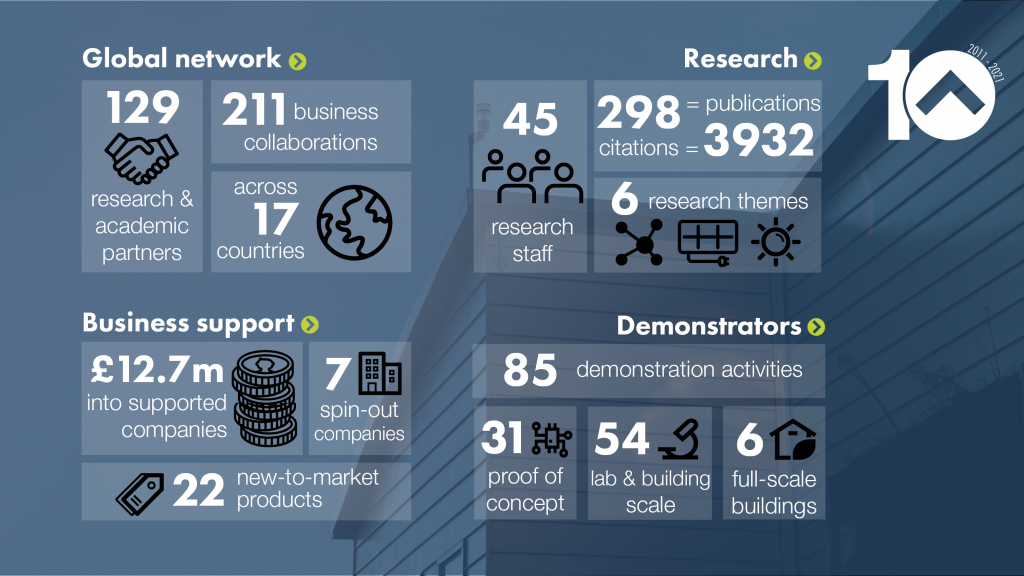
Ten years ago this month, we brought together academic and industry partners with expertise in printed photovoltaics, electrical storage, thermal storage and industrial coatings; they were united under a shared vision for a concept that was then called ‘Buildings as Power Stations’. What a long way we’ve come since then!
Now the concept is called Active Buildings. We’ve built a number of working demonstration buildings; we’ve developed a toolkit for building designers; we’ve established the £36m Industrial Strategy Challenge Funded Active Building Centre to enable their wider deployment; and the £7m SUNRISE network is taking Active Buildings to India and other developing nations; we’ve also made advances in manufacturing of printed solar cells; and achieved record efficiencies for thermoelectric devices… amongst many other things!
The last ten years has seen advances in UK decarbonisation too: as the nation prepares to host the United Nations’ COP26 summit, we’ve seen both the UK and Welsh Governments make significant commitments towards Net Zero emissions by 2050. We’ve also seen the greenest year on record for electricity generation, with wind and solar both hitting their highest ever contributions to supply in 2020.
Yet many challenges remain in scaling-up low carbon buildings to make a real impact.
Over the next few months we’ll be looking back at our achievements over the last ten years and forwards to what needs to be done in the next ten, focussing on four themes:
- Manufacturing technology at scale – with 289 publications and 3,932 citations, we’ve created research knowledge that will enable rapid scaling of new technologies
- Business collaboration – working closely with more than 211 companies, we’ve helped to bring new products to market, improved processes, and helped companies to run more sustainably.
- Full-scale demonstration – we’ve tested and proved a range of new technologies and energy management systems in over 85 demonstration activities
- Decarbonisation of heat and power – while there have been huge advances in the last ten years many challenges remain, not only in energy for buildings but also in the wider energy infrastructure and in the industrial processes that will make the materials and technologies we need.
